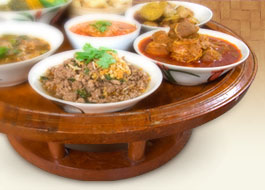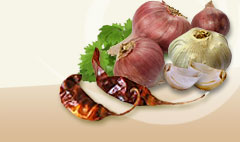Phak sio |
|
|
 | Bauhinia Sp. |
|
| |
 | leguminosae-Caesalpinioideae |
|
| |
 | Sio dok daeng (Northern), Sio wan (Mae Hong Son) (Kanchana Diwiset, et al., 2005, p. 137) |
|
| |
 | Tree: 7-12 m. high. Leaves simple, entire bilobare or divided into 2 free leaflets, 3 in. wide, 4.5 in. long, smooth rims (Kanchana Diwiset, et al., 2005, p. 137). |
|
| |
 |

100 gm. contain 111.89 calories, 14.28 gm. protein, 2.28 gm. fat, 8.53 gm. carbohydrates, 515.68 mg. calcium, 126.92 mg. phosphorus, 4.46 gm. iron, 416.61 mg. Vitamin A, 10.69 mg. B1, 20.11 mg. B2, 2.84 mg. niacin and 5.89 mg. Vitamin C (Saowapha Sakayaphan, 1991). The tender leaves and shoots can be steamed and eaten with all kinds of namphrik, or made into a spicy vegetable soup mixing it with other kinds of vegetables, tomatoes and dried fish. (Kanchana Diwiset, et al., 2005, p. 137). |

The roots can be used to relieve fever. (Kanchana Diwiset, et al., 2005, p. 137)
|
|
| |
 | Rainy season and dry season. |
|
| |
 |
Kanchana Diwiset, et al., compiler, (2005). Phak Phuen Ban Phak Nuea. Phennapha Sapcharoen, Editor. (2nd ed.). Nontaburi: Center for Text Development on Traditional Thai Medicine. (in thai). Pictures of some rare to find local vegetables . (2008). Retrieved on 18 November2008from http://www.fortunecity.com/campus/springbank/677/std1/P18.html(in thai). |
|
| |
|
|




